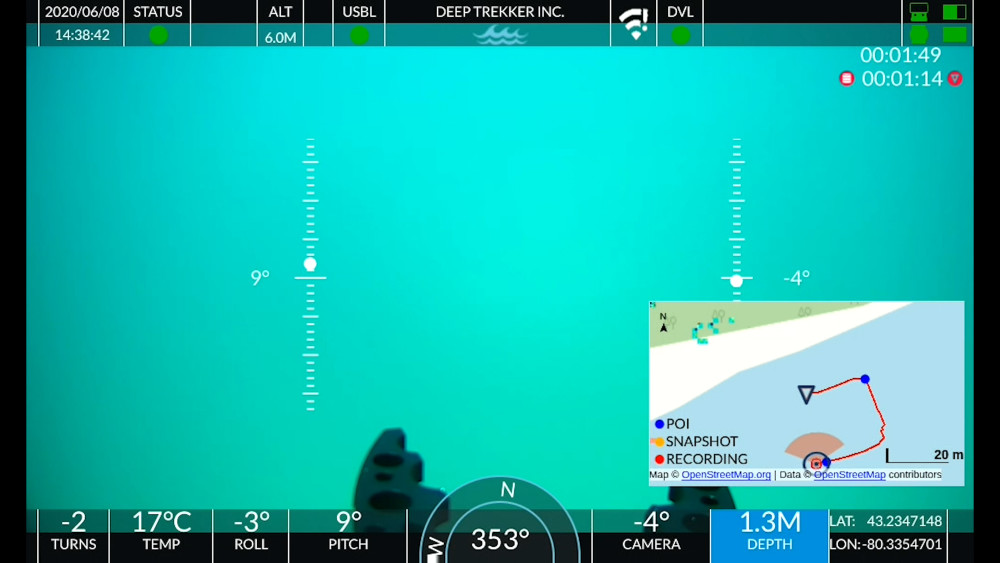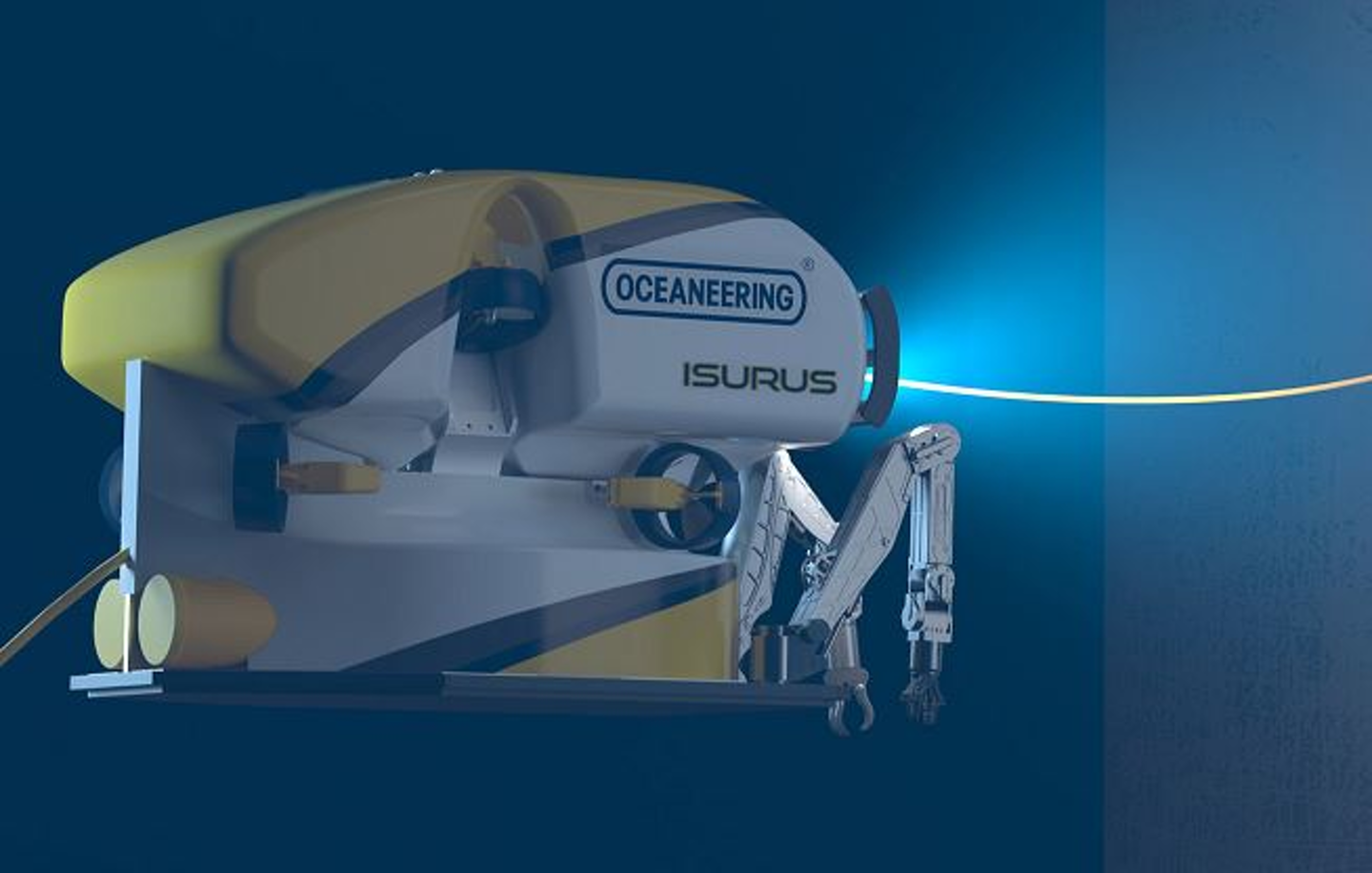Home › Forums › ROV › ROV Technical Discussions › lim tripping prob
- This topic has 55 replies, 20 voices, and was last updated 16 years, 1 month ago by
barrowmafia.
-
AuthorPosts
-
February 23, 2008 at 7:01 am #1324
nelson69
Participantgood day people
looking for some tips if anyone had same problem
we have been having lim trip when we in water but only when we get to depths below 80 mtrs .
we have tested everything (megger ) did find two whips from manip and tilt motor with bad insulation replaced them aslo close inspection found two small cuts on thruster whip so replaced thruster .
also done fibre re-term as we were losing comms also with out lim tripping.
given the rov clean bill of health whilst on deck and testing everything again .
get in the water for about two hours doing our work and she trips again get her back on after 30 mins trip again so bring her back up , open her up check everything again nothing, getting over 1000mh on everything only one of the lights is reaching 900h which is still ok.
looked for some spikes in the in coming power but all clean .
I have been told the lim is not always to be trusted , the lim setting is factory set so it should be ok .
we do have prob with nav pod no depth reading) it meggers ok and nothing looks suspect inside but wont reset to zero on deck , waiting for new pod coming out .
but if anyone had this sort of prob before tips would be useful.
next step would be to change every whip and part one by one but that will be last option.February 23, 2008 at 7:32 am #16213Scott Beveridge
ParticipantUmmmm…. What vehicle?
What LIM unit??? Bender? I’ve had 2 go bad on me over the years….
February 23, 2008 at 11:12 am #16214nelson69
Participantits only falcon dr so lucky very easy to work on, the lim is a bender .
so maybe that could be prob if you have seen them go tits up before ,
i would be happier if we had water ingress somewhere then we would find the prob and fix it but evreything on the rov showing up to be just fine ahhhhhhh she tripped again today .February 23, 2008 at 11:55 am #16215Ray Shields
ParticipantIs there any way you could disconnect the power cores and do an insulation test as soon as the fault occurs to see if there really is a low insulation? Remember that the Bender MUST be disconnected before any megger checks or you can blow it up.
When you say 900h is good, do you mean MegaOhms (Mohm)? Our workclass TMS sliprings are 30MOhm insulation @5kV, has been for years 😀 )
February 23, 2008 at 1:04 pm #16216Andy Shiers
ParticipantAre the Tappings on the Transformer set to the right input voltage ?
And has this been a problem from the word go or only in the last few days of the contract ?February 23, 2008 at 1:50 pm #16217Alex Kerr
ParticipantBeen involved with the Seaeyes since bbefore the falcon was produced-
LIMs are tempremental and need different settings for different conditions ie depth, salinity(area of the world),temperature. Worked on a trend analysis and noted the findings and this helped a lot.
Still hava the info knocking around somewhere, will dig it out and PM the results. 😉February 23, 2008 at 3:55 pm #16218Andy Shiers
ParticipantWhere is it you are working Nelson ?
And what type of vessel ?February 23, 2008 at 11:36 pm #16220Chaos
ParticipantI keep hearing these stories about lims breking down and i have only seen one with my own eyes and that was on seaye 600 #49 (the first digital 600) on its first job. I have changed the setting on a lim even by passed one to finish the job but only replaced one.
I don’t know anything about the Falcon but my pilot who is sat next to me (who has been using falcon for three years) had the same problem with the comms and it was a loose wires in the "vehicle power supply unit".
Since it only happens below 80m it would seem likely that one of the cables is breaking down under pressure.
Most DC trips on other seaeyes are tether related then the next favorate is the light whip or light unit, these are over looked. even if the lights are off a faulty light unit/cable will still trip the lim.
From the description i am being given you will have to split the junction box, disconnect an item i.e lights and launch the vehicle when you get to thrusters put a big weight on the vehicle and launch.
This is assuming the tether is ok and does not need reterming, or that the problem is not a damaged tether 80m or so back from vehicle where is runs off the drum/over sheave wheel (have seen this on tiger 9).It could also be the cable between the two pods. Try replacing this first.
I think that from the description i’m being given about the Falcon you will have to do it the hard way.
Sorry i can’t be any help.
February 24, 2008 at 1:41 am #16219Scott Beveridge
ParticipantAs with any other type of LIm, GFD, GFM, or what have you, start by disconnecting one item at a time to isolate the problem. This is, of course, once you’ve checked your longline and sliprings. Then , if not found, delve into it deeper starting at the e-pod: bulkhead conns., etc. (once again, this is after the cable and external (wet bits) components have been checked / isolated. One step at a time dude…
Good luck!
February 24, 2008 at 12:17 pm #16221Savante
Participant1.0 Depth sensor – has rs232 output – make up a connector to an RS232 plug and connect to a laptop – power up your pressure sensor. Open up hyperterminal and hten have a look see if you’ve got a string output. If none exists, switch tx and rx lines on your plug and re-try, if not working – the 86 your pressure sensor.
1.1 If string exists – get pencil with rubber on the end and depress the active point with the rubber. If string does not update – 86 the sensor.
1.2 Pressure sensor feeds string into 3D gyro and then string is added subsea. Connect an ADAM to the topside unit and run diagnostic software – have a look see if the string is updating with heading, etc. (Could also really just check the heading on the HUD I guess, but sometimes you might see if there is actually a pressure component updating or if it is ####.#
If no string from pressure sensor, then check connection to the 3D gyro.
1.3 We had a software glitch with a really old panther 905 – we managed to get it working again by pulling out the overlay card and replacing some of the chips on it. (This was in the case that we had a pressure string recording on the ADAM).
1.4 Check the output bulkhead connector – are you getting power there? Is it within tolerance?
2.0 With your LIMS tripping -go and double check your factory settings mate – assumptions are totally the muther of all f*ck ups. I reccommend that you check out the BENDOR website – offload the spec sheet and translate the light trip settings.
😈 😈 😈 😈 😈 😈 😈 😈 😈 😈 😈 😈
2.1 Go phone up seaeye and confirm the meggar procedure for the thrusters. For anything other than a falcon it’s connect 1,3 together, 2 on it’s own and 4,5,6 in another group. CHECK THIS WITH SEAEYE – If you screw up you’ll blow the sh1t out the thruster controller chips. 😆 I am looking for my note book but I think I sent it in at the end of the job for the client.
😈 😈 😈 😈 😈 😈 😈 😈 😈Seaeye quote their thruster as having minimum isolation of 200MOhm I think. Anything less (and there’s a heap of systems I’ve seen with down to 20MOhm that still work) and you should replace.
3.0 Meggar out the light housings independently and then heat gun the hell out of them on both the underside of the glass housing side of the fuse and on the other side too ! Isolation on deck should be >1Gohm, but we can tolerate to 200MOhm.
3.0.1 Look at the LIM settings and use this to identify the circuit causing probs- is it the AC or DC (falcon has only 1 DC – not two?)
3.1 Meggar the whips. Replace all the whips on the system – put end caps on everything – strap it to your vehcile- submerge to 80m and then leave for 30mins. Recover to deck and meggar quickly at least at 500V. Seaeye quote min of 200MOhm but we run a lot less normally. As per above- remember that whip IR will be reduced as pressure pushes the conductors together or water ingress occurs.
3.2 You can also do the end cap trick with the vehicle in the water – lower to around 80m off deck and then meggar the lines in the system to check that the umbilical isn’t leaking or pressure at the sheave. You’ll need the vehicle on the end to get the strain.
3.3 Falcons don’t really have a TMS (you can get a thing like a TMS) but if you are using a clump weight you may have been putting a shed load of strain on it beneath the minimum bend radius (if your clump weight is really heavy!) – hence lower MTBF.
3.4 Are you using slip rings on a winch? Definately one to check ! Do the long way around with a notebook and keep the record for long term! Other people will thank you for it!!
4.0 Check the DC umbililcal balance – effectively you have a terminal potential differnce you need to compensate for. Seaeye have a procedure, but effctively you are compensating for the voltage drop across teh umbilcial at various loads. If you are substantially out of compnsation, there may be something like a transformer subsea or a regulator that may be getting over warm!
Spark could you please publish your LIM data – sounds very useful to have.
February 24, 2008 at 12:24 pm #16222Savante
ParticipantThere is also a test we do with a wet towel on a bulkhead connector to an earth line to look for leakage, but that’s really really not for everyone and definately not for the back of a boat !
We got a procedure from bendor too for calibration and verifying the LIMS but you need to get some bits n bobs from RS at RSWWW.com in order to do it. It’s not fun. Speak to seaeye though first. There are stories of someone smoking out a shack by not disconnecting the LIMS !! heh heh heh.
You could also try putting some thick heat shrink over the 80m point of failure so that it reduces the strain over the sheave. Prob is you probably need a reterm if you can’t identify the fault on the vehicle.
You could also check the capacitance on the conductors with the vehicle in teh water – compare this to dry values and then check that there are no variations.
Other one we had is to do with the fuses on the lights – check that they aren’t 10A rated fuses ! We had a system LIM trip because the darned controller card was screwing up. Who the hell puts 10A fuses in a 1.5A socket? 😈
Is it a DR ?
February 24, 2008 at 1:02 pm #16223Andy Shiers
ParticipantWARNING 😯
DO NOT MEGGAR THE FULCAN THRUSTERS LIKE THE REST OF THE SEAEYE FLEET 😕
The Fulcan in Seaeye’s great wisdom changed the earth pin 2 to another pin please check on the drawing before meggaring the thrusters.
So………… where are you working and what vessel ?February 24, 2008 at 5:48 pm #16224Savante
ParticipantGRANTED _ I’ll edit my post with flaring twisteds so it’s more obvious!!!
You know it’s just "commander pyle" keeping us all on our toes. 😆
February 25, 2008 at 9:05 pm #16225Andy Shiers
ParticipantYou could also change out the Tilt/feed back splice , They have been known to go to ground at depth, It is a burton plug , yes 😕
February 26, 2008 at 9:43 am #16226SteadyEddie
ParticipantLostboy….you always portray yourself as a very experienced rov technical know how and are usually very quick to comment on other peoples shortcomings……..you sure you didn’t work at morrisons?
-
AuthorPosts
- You must be logged in to reply to this topic.



